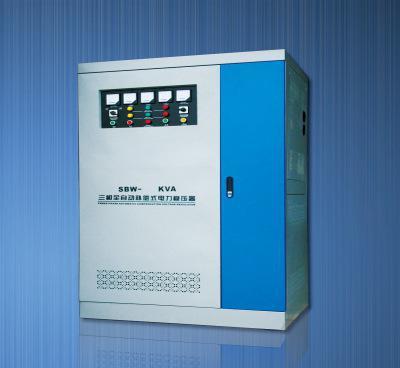
Advantages
The three phase voltage regulator is the modern standard for voltage regulation in most power quality applications. While an EVR will be about 25% higher in cost than a comparable mechanical voltage regulator, the difference in correction speed often precludes the use of mechanical units.
Output voltage regulation is good (tap switching) to very good (double conversion)
Ultrafast voltage correction speed
No restrictions on the number of correction cycles
Versatility of kVA rating, voltage and configuration
Very low or no regular maintenance
Good line isolation
The ST type of EVR has a current overload capacity and durability that can surpass that of brush-type mechanical regulators since brushes can be damaged quickly when regularly subjected to high currents. By eliminating the inherent overload weakness of the FPS and double conversion units, the series transformer electronic voltage regulator is good in any application but is the best choice for industrial, heavy commercial and medical imaging applications.
Disadvantages
Poor current overload capacity (except the series transformer design)
More expensive than mechanical voltage regulators
As discussed above, the principle drawback of electronic voltage regulators is the limitation imposed by the SCRs or other power semiconductors. FPS voltage regulators as well as double conversion and UPS units can fail in a matter of hours or days when put in an application with high inrush or overload currents – without exercising due precautions such as sizing for the peak currents.